Advertising recycles History
Till August 28, 2011, you can discover the “Advertising recycles History” exhibition of Les Arts Décoratifs. What are the unifying elements of our collective memory, how are they used by advertisers? A visit through 300 archive documents.
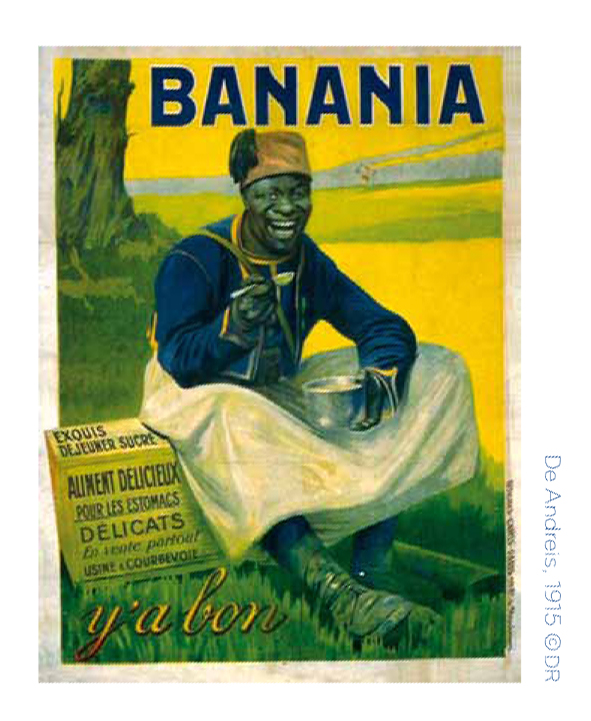
Sometimes, to express itself, a brand does not choose to put forward its past but rather to use elements of History. A little digression for this blog…
For an advertisement to be unifying, its references must be most commonly shared. The collective memory is a complex thing to comprehend. In ads, it is easier to focus on significant elements, often visual ones, so that they quickly fall into caricature and cliché.
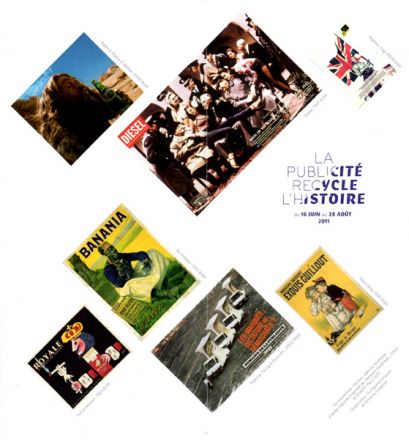
What are the themes to be found in advertising then?
It is most amusing to see in retrospect which great tendencies and events have left their imprint on ads.
Let’s begin with great figures such as: pharaohs, Cleopatra in particular, the Gauls, François I, Joan of Arc, Napoleon and kings.
Indeed, these characters bring us back to a people’s or a nation’s exploits, to symbols of greatness. Thus, after the French defeat in 1871, the number of great figures’ images increased in advertising. Besides, some products love some particular characters, for example, in the cognac market: Louis XIII of Rémy Martin (bearing this trend in its very name), the reference to the “Sun King” in Rémy Martin’s advertisings, or to Napoleon in Courvoisier’s. By the way, isn’t Napoleon a trade name for (an extra old) cognac?
These uses are supposed to induce respect or a familiar link. Such references are often very close to caricature.
Another theme: great events. The ones that marked the previous century are the “Entente Cordiale”, the colonial expansion (with the still striking example of Banania). Then, protest brought by May 1968, is called to mind. Great figures of communism, great symbols of repression and popular rebellion can be found in Absolut and E. Leclerc ads. In such cases, it goes beyond the mere taking over of the collective memory to lead to brand citizen action, or anyway to pretend to do so. The evolution can also be noted in the tone, which is far less humoristic and overuses symbols (fists, walls…).
Of course, Benetton dares the most with crude images of violence.
What about today? It is still too soon for us to assess what trace our present time will leave in History, what will be recalled in our collective memory. However, we can already see what we retain today from our vast History. The exhibition illustrates our recent years through advertising using political figures and election campaigns. It is a fact. But is it still all about the taking over of history? Or is it simply about the excesses of the popularization of politicians?
Everybody can judge by themselves. Too bad for serious intentions. Contrary to what its punch poster – inspired by an E. Leclerc campaign – announces, the exhibition eventually leaves a general impression of lightness.
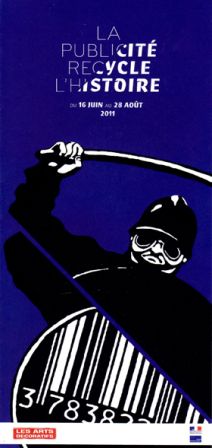
To end with this and to come back to the blog’s editorial line, one thing strikes me. The brands rooted in history and in their own story show respect for their historical references. Young brands use them as mere pretexts to speak to our collective unconscious. While others seize these references for them to focus their message on social awareness, claims even on criticism at times. Would it be easier for some brands to use History’s wanderings rather than communicate on their own story and values?
La Publicité recycle l’histoire
Les Arts Décoratifs
107 rue de Rivoli
75001 Paris
www.lesartsdecoratifs.fr
Images: Les Arts Décoratifs

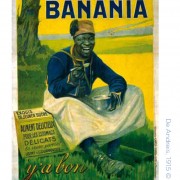




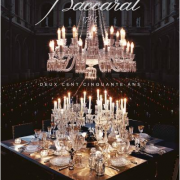
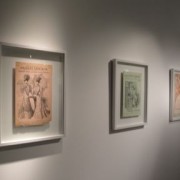



Leave a Reply
Want to join the discussion?Feel free to contribute!